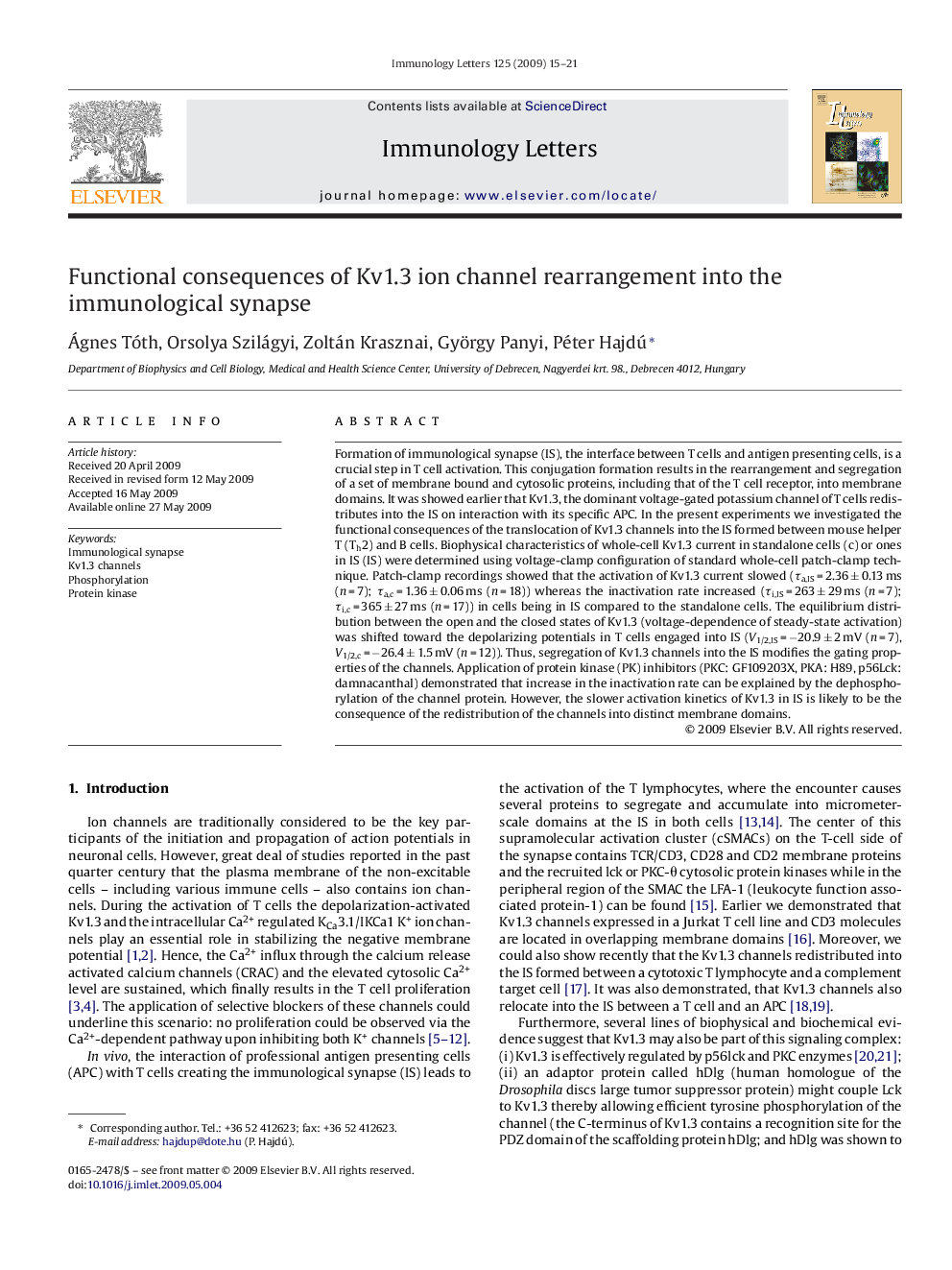| کد مقاله | کد نشریه | سال انتشار | مقاله انگلیسی | نسخه تمام متن |
|---|---|---|---|---|
| 3355992 | 1217229 | 2009 | 7 صفحه PDF | دانلود رایگان |

Formation of immunological synapse (IS), the interface between T cells and antigen presenting cells, is a crucial step in T cell activation. This conjugation formation results in the rearrangement and segregation of a set of membrane bound and cytosolic proteins, including that of the T cell receptor, into membrane domains. It was showed earlier that Kv1.3, the dominant voltage-gated potassium channel of T cells redistributes into the IS on interaction with its specific APC. In the present experiments we investigated the functional consequences of the translocation of Kv1.3 channels into the IS formed between mouse helper T (Th2) and B cells. Biophysical characteristics of whole-cell Kv1.3 current in standalone cells (c) or ones in IS (IS) were determined using voltage-clamp configuration of standard whole-cell patch-clamp technique. Patch-clamp recordings showed that the activation of Kv1.3 current slowed (τa,IS = 2.36 ± 0.13 ms (n = 7); τa,c = 1.36 ± 0.06 ms (n = 18)) whereas the inactivation rate increased (τi,IS = 263 ± 29 ms (n = 7); τi,c = 365 ± 27 ms (n = 17)) in cells being in IS compared to the standalone cells. The equilibrium distribution between the open and the closed states of Kv1.3 (voltage-dependence of steady-state activation) was shifted toward the depolarizing potentials in T cells engaged into IS (V1/2,IS = −20.9 ± 2 mV (n = 7), V1/2,c = −26.4 ± 1.5 mV (n = 12)). Thus, segregation of Kv1.3 channels into the IS modifies the gating properties of the channels. Application of protein kinase (PK) inhibitors (PKC: GF109203X, PKA: H89, p56Lck: damnacanthal) demonstrated that increase in the inactivation rate can be explained by the dephosphorylation of the channel protein. However, the slower activation kinetics of Kv1.3 in IS is likely to be the consequence of the redistribution of the channels into distinct membrane domains.
Journal: Immunology Letters - Volume 125, Issue 1, 30 June 2009, Pages 15–21